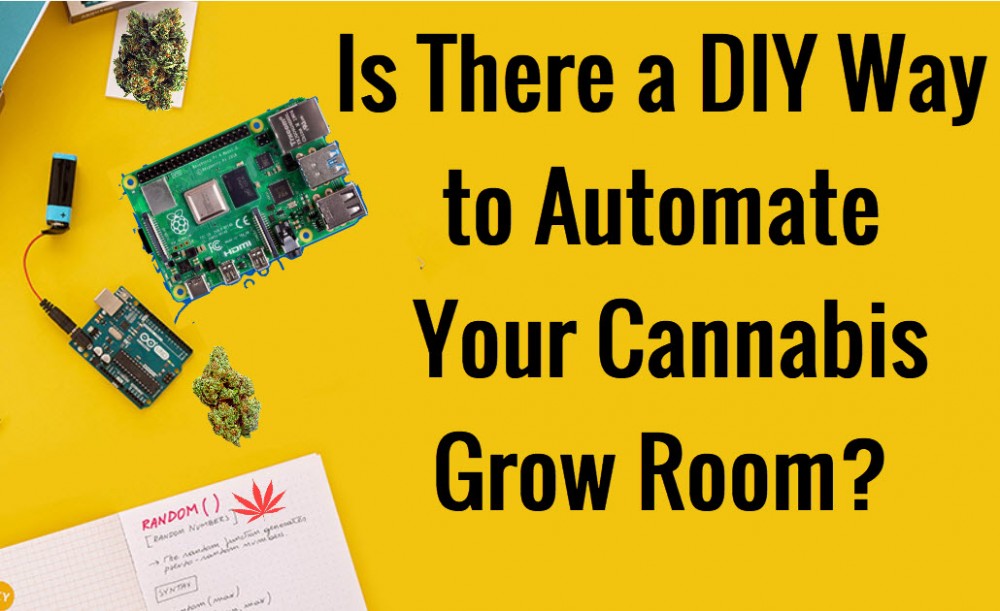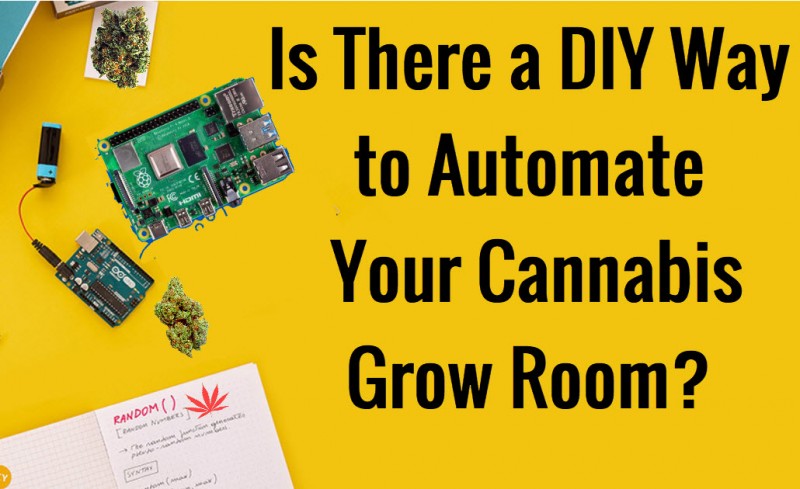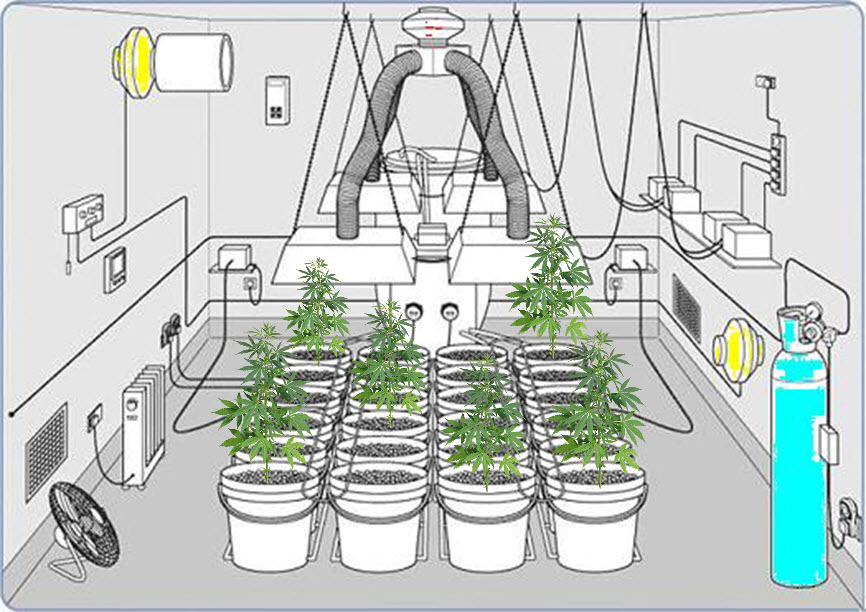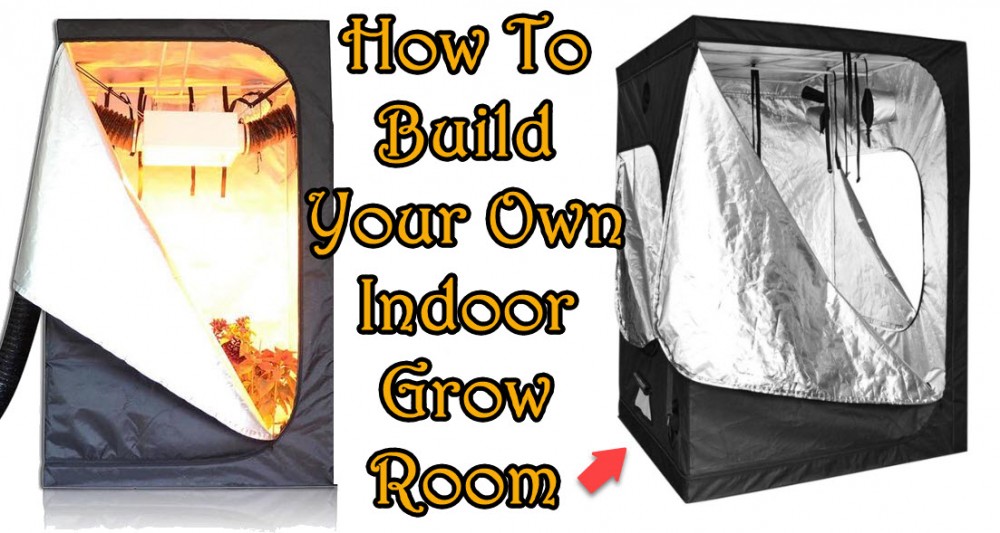Automated Cannabis Growing to keep ‘The Ladies’ Happy

Growing cannabis can be a very rewarding experience but within the same breath it can also be a very daunting challenge. The moment you embark on “The Grower’s Journey” – you’ll run into a myriad of issues that you’ll need to problem-solve rather quickly in order to keep your grow alive.
This includes tasks like checking the pH of the water, humidity levels, light exposure, watering cycles, wind, nutrient concentrations [if growing hydro] or the quality of the soil if growing that way. Leaving any of these issues unattended will surely have a negative effect on the quality of your crop and potentially could ruin it altogether.
Within hydroponics – there is a certain level of automation involved as it would be impossible to manually water a hydroponics system. Within a hydroponics set up, you’ll at the very minimal have your lights and water on “timers”. These could be digital timers or those old school analog ones. Either way, this simple addition of timers is a very rudimentary way of automation within your grow.
Some companies like Seedo Labs – Headquartered in Israel – created a fully automated grow system powered by AI to optimize your grow cycles. What’s awesome about Seedo’s technology is that all of their grow boxes are connected and learning from each other. This means that every successful grow in a Seedo is adding to the AI algorithm which will optimize and automate processes to yield maximum capacity. The problem with Seedo is that it costs $2500 as a starting price, making it not that accessible to many folks.
This begs the question – are there cheaper Automated systems out there or better yet – is there a way you could automate your own grow room?
The DIY Automator
The DIY approach to full cannabis grow automation will require the use of Arduino and perhaps Raspberry Pi. If you don’t know what this is – Arduino is an open source tech solution that gives you access to circuit boards so that you can program tasks.
For example, you can program an Arduino circuit board to pair with a clapper and then program it to turn on or off your TV by clapping. This is just one example. According to the website;
Arduino is an open-source electronics platform based on easy-to-use hardware and software. It's intended for anyone making interactive projects.
Raspberry Pi is essentially the same thing, except many folks in cannabis forums that have implemented this tech into their grows found that Raspberry Pi has better monitoring capabilities whereas Arduino seems to have more of a mechanical application. For example – Raspberry Pi [RPi] could be used for monitoring humidity levels, heat, etc – whereas Arduino would be better suited for adjusting the fans, lights, etc.
However – with a little bit of creativity you should be able to utilize a single solution for everything. I’m not endorsing either/or and will leave this entirely up to your criteria & budget.
What are the aspects you’d want to automate?
Before you actually go ahead and muck things up – planning is always a good first step. I recommend looking at what are the most crucial things you would need to automate.
For a hydroponic grow you’d want to automate/Monitor:
pH levels of water – this would require placing a sensor inside of the water that will be specifically programmed to detect the pH. When it shifts beyond a pre-determined configuration, it will signal another component that will either add or remove pH depending on whether it’s too acidic or alkaline. Additionally, the pH dispenser would be hooked up with an Arduino device.
Nutrient densities – Similarly, a sensor would be measuring the density of the essential nutrients with a medium configuration established. When the densities shift, the system will autocorrect. This could be programmed for vegetative state as well as flowering state.
Light cycles – This is one of the things that most growers automate. With Arduino though, you’d be able to pre-program the cycle weeks ahead of time and fully automate the switching of the lights.
Air cycles/Humidity – Similarly, another sensor would be placed somewhere near the center of the grow space which will solely be focused on measuring the ideal humidity within the box. If there is too much humidity – it could trigger fans to extract the air, if it’s too dry – there could be a fogger placed inside that would turn on to re-establish the pre-determined humidity levels.
Reservoir Water Levels – This sensor will tell you when your reservoir needs to be refilled. If you are near a tap or have a tank of water with a pump – you could Arduino the refill process as well.
Light Spectrum – This sensor would tell you the range of the light spectrum being emitted. Why? Over time you’ll notice the degradation and can program Arduino to text you when your lights become inefficient for the grows and requires replacement.
C02 – You can boost CO2 levels with Arduino by monitoring the CO2 levels in your grow area. If it falls to a certain point, you can signal a pump to start pumping in some CO2 until it reaches the maximum threshold.
Temperature – This could be programmed along with the humidity levels.
Growth Progress – While this might be an extra feature, having the ability to “see inside” your grow without opening up the doors reduces the risk of contamination and is just a cool feature. You can buy small cameras and place them in to turn on periodically and monitor or even take a snap shot of the progress. This way you can always keep an eye on the “Ladies” from your phone.
I’m sure there are other things I’m not thinking about now like perhaps a system of measuring when you’d need to re-buy nutrients or something of the sorts. The idea here is to show you just exactly how much of your grow can actually be automated. Arduino is very cheap and with a little bit of work – you can reap the benefits of full automation within your grow.
Here’s an example of what I’m talking about – Automate your Grow!
GROW ROOM BASICS, READ MORE...
HOW TO SET UP YOUR FIRST GROW ROOM, FULL INSTRUCTIONS!
OR..
HOW DO YOU GROW MARIJUANA PLANTS IN SMALL SPACES?
OR..
HOW DO YOU SET UP A CANNABIS GROW ROOM AT HOME?









